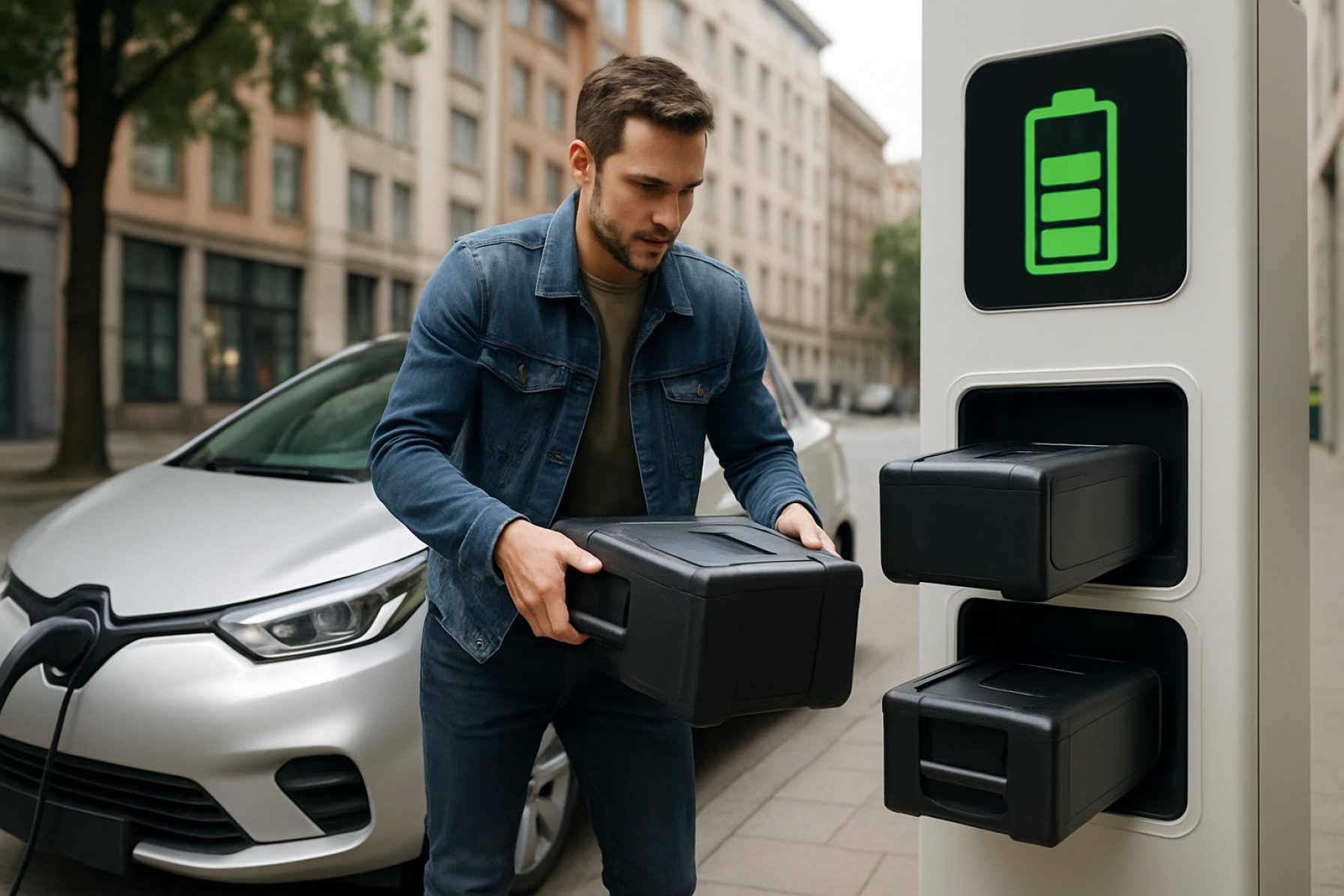Global Surge in Swappable EV Batteries: Why Industry Giants Are Betting Billions on the Next Big Mobility Trend
The global swappable EV battery market is booming—discover why this fast tech is drawing record investment and poised for explosive growth.
• Projected market value in 2033: USD 7.9 billion
• Expected CAGR (2025-2033): 24.3%
• Fastest growth in: Asia-Pacific regions
• Leading players: NIO, Gogoro, CATL, Sun Mobility
The swappable electric vehicle (EV) battery market is erupting worldwide—especially in 2025 and beyond. No longer a futuristic concept, battery swapping has become the go-to solution for quick, hassle-free EV energy.
Picture this: Instead of waiting for your EV to charge, you pull into a service spot, swap your depleted battery for a fully charged one in minutes, and hit the road. No more range anxiety. No more charging queues. Street by street, city by city, this technology is rewriting how mobility works.
Why Is Battery Swapping the Breakout Trend for 2025?
New market projections from OmrGlobal.com signal dazzling growth—soaring from $1.1 billion in 2024 to almost $8 billion in less than a decade. Governments, fleet operators, and private investors are racing to deploy swap stations, especially where urban density and delivery demand are highest.
Here’s what’s fueling the buzz:
– Fleet operators cut vehicle downtime and boost revenue.
– E-scooter, e-motorcycle, and three-wheeler adoption surges in crowded cities.
– Governments offer subsidies and enshrine battery-swapping in green transportation goals.
– Battery-as-a-service (BaaS) models unlock recurring revenue for both startups and automotive giants.
For more on global clean energy trends, visit IEA and Bloomberg.
Q&A: What’s Powering the Swappable EV Battery Boom?
Q: Who’s leading the battery-swap revolution?
A growing roster that includes NIO, Gogoro, CATL, Ample, Sun Mobility, Ola Electric, and Honda. Chinese and Indian startups are outpacing legacy automakers, rolling out vast swap networks in Asia.
Q: Which vehicles benefit most?
Two- and three-wheelers, last-mile delivery fleets, and urban ride-share programs are prime adopters. These high-volume segments gain most from minimal downtime and fast turnaround.
Q: Any game-changing innovations in 2025?
Yes. Advances in battery standardization are breaking barriers, enabling cross-brand swapping. AI-driven station logistics and modular battery racks are slashing swap times and boosting reliability.
How Battery Swapping Works—Step by Step
1. Drive or ride to a designated swap station.
2. Technicians—sometimes robots—remove your depleted battery.
3. Instantly get a fresh, fully charged battery installed.
4. Pay per swap or subscribe for unlimited access.
This seamless process, championed by companies like NIO and Gogoro, is transforming daily transportation in electric-first cities.
How Fast Will the Swappable EV Battery Market Grow?
The market is primed for a 24.3% compound annual growth rate through 2033, according to industry analysts. Asia-Pacific is driving explosive adoption, while Europe, North America, and the Middle East are ramping up public-private partnerships and pilot programs.
Environmental policies, technological breakthroughs, and shifting consumer demand are all feeding the momentum.
Top Challenges & Opportunities Ahead
Battery standardization, up-front infrastructure costs, and regulatory hurdles remain. But as automakers sign more cross-compatibility deals and cities embrace swap-friendly urban planning, massive growth looms.
Key market openings:
– Last-mile urban logistics
– Electric ride-sharing fleets
– Battery management & data analytics platforms
Competition is fierce. Leading brands are enhancing service through better battery tech, nationwide logistics networks, and AI-driven station management.
Who’s Winning the Swappable EV Battery Race?
Asia-Pacific remains the clear leader, with India and China hosting the densest swap station rollouts. Regional giants like NIO, Sun Mobility, and CATL are setting global benchmarks. Watch for Honda, Ola Electric, and Ample to expand across Europe and North America.
More on global players at Honda and CATL.
Investor and Stakeholder Insights
Analysts urge investors to pay close attention to:
– Innovation in modular battery formats
– Battery-as-a-service business models
– Nation-level EV mandates and green subsidies
– Emerging start-ups in Africa and South America
The Bottom Line: Is Your Business Ready to Ride the Battery Swap Wave?
Don’t Get Left Behind—Act Now!
- Review the 2025 EV mobility landscape—identify new markets
- Evaluate strategic partnerships in battery swapping and BaaS
- Monitor regional policy shifts and infrastructure mandates
- Stay ahead by embracing next-gen battery technology
The EV transition is here. Will you lead— or follow?
